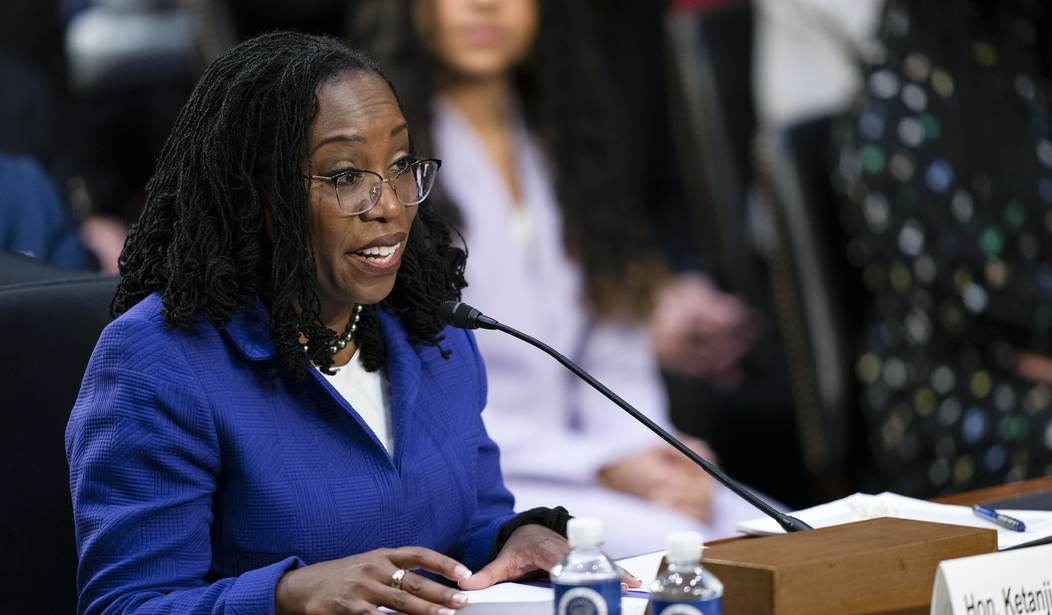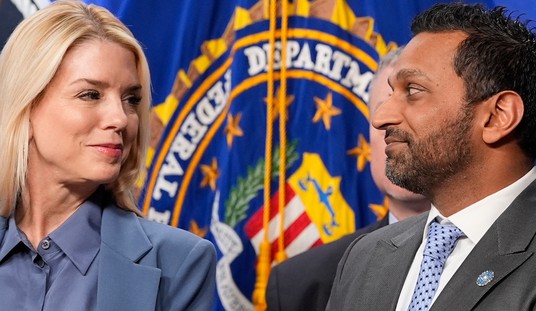The final vote confirming Ketanji Brown Jackson as the next Supreme Court associate justice is expected to take place this month, and unless something truly unexpected happens between now and then she will be confirmed. She’ll even have the patina of bipartisan support with the vote of Susan Collins in her favor. (It’s still possible she could get Lisa Murkowski as well.) This will save Kamala Harris the hassle of being pulled away from whatever rambling speech she’s giving at the time to cast an awkward tiebreaking vote. But some people can’t take yes for an answer these days, so we’re still hearing complaints from Democrats about how “unfair” the questions the nominee received from Senate Republicans were and the insulting (if not flatly racist) failure of more Republicans to vote for her will be.
NBC News picks up the torch this week to highlight these complaints and use them to ask the question referenced in the title. They ask the country whether or not the Senate confirmation process for Supreme Court nominees is fundamentally broken at this point and whether there is anything to be done about it. They begin predictably enough, describing how the nomination should have been “a layup” with the Democrats controlling both the White House and the majority in the Senate. But then, they say, the process “turned ugly.” Questions about her history of handling down pitifully light sentences in child pornography cases are described as efforts to “tarnish her image.” They go on to describe the GOP as “hectoring her about political issues like critical race theory.” And then they get down to the idea that the confirmation process is broken.
But the likelihood of narrow success for Jackson obscures the ongoing disintegration of the Supreme Court confirmation process, which some senators fear is irreparably broken. While blame games are abundant, consensus solutions to repair it are lacking.
GOP tactics reveal a party that remains hungry for confrontation despite five years of using unprecedented tactics to engineer the most conservative Supreme Court in a century — a 6-3 majority poised to reshape U.S. law. Senators justify it in part by citing Democrats’ treatment of conservative judges dating back decades. Many also insist that any nominee embrace “originalism,” a framework of narrow constitutional interpretation popular on the right.
Democrats say Senate Republican Leader Mitch McConnell broke the process in 2016 when he eliminated a longstanding presumption that a president’s nominee for a vacancy gets a vote. For 10 months he blocked President Barack Obama’s pick, Merrick Garland, saying the presidential election was too close. Then in 2020, he rushed through Justice Amy Coney Barrett the week before the election after the death of liberal icon Ruth Bader Ginsburg, pulling the court to the right.
There’s much more of the same at the link if you care to read it. Everyone is bemoaning the lack of civility and bipartisanship in the SCOTUS confirmation process, with NBC assigning 90% of the blame to Republicans while grudgingly admitting that Democrats played a role in the process. The finger-pointing stretches back far in time, with some Republicans claiming that the Democrats began paving this path with the confirmation hearings of Robert Bork and, later, Clarence Thomas. Democrats blame it all on the confirmation of Neal Gorsuch as well as the failure to confirm Merrick Garland.
Personally, I see this from two angles. On the one hand, it’s difficult to say that the confirmation process is broken when there is currently a full slate of nine justices on the bench and another is about to be confirmed when there isn’t even an opening yet. From that perspective, the system is obviously working. It’s just not working the way that half of the Senate would like to see it work when the other half is controlling the process. If we reach the point where no new members can be confirmed, then we can revisit the idea of it being irreparably damaged.
But in another sense, the Senate itself most definitely is broken as compared to how the Founders originally envisioned it and the way that the members actually managed to get at least some things done in a largely civil manner back in the day. It is George Washington who is credited with originally describing the Senate as the “cooling saucer” for the “hot tea” of the House. And for a very long time, the Senate did (mostly) appear to act in that fashion, at least to a degree.
But the reality is that the nation is far more divided now than I’ve ever seen it in my lifetime. Those divisions show up in the Senate today every bit as much as they do in the House. Voters demand more robust partisanship from their candidates and the drawing of hard lines once the winners are seated. A failure to deliver a sufficient level of fire and brimstone on the confrontational issues of the day can quickly lead members to find an unpleasant surprise waiting for them in their next primary race.
I’m sure that plenty of people miss the “good old days” of polite discourse, moderation in policy, and a willingness to compromise to get things done, assuming those days ever really existed. But we have the Senate that the people wanted, and that goes for both parties. We’ve taken to referring to congressional campaigns as battles and we all suit up for “war.” We shouldn’t be shocked when the warriors we send to Washington break out their swords and start swinging after they arrive.








